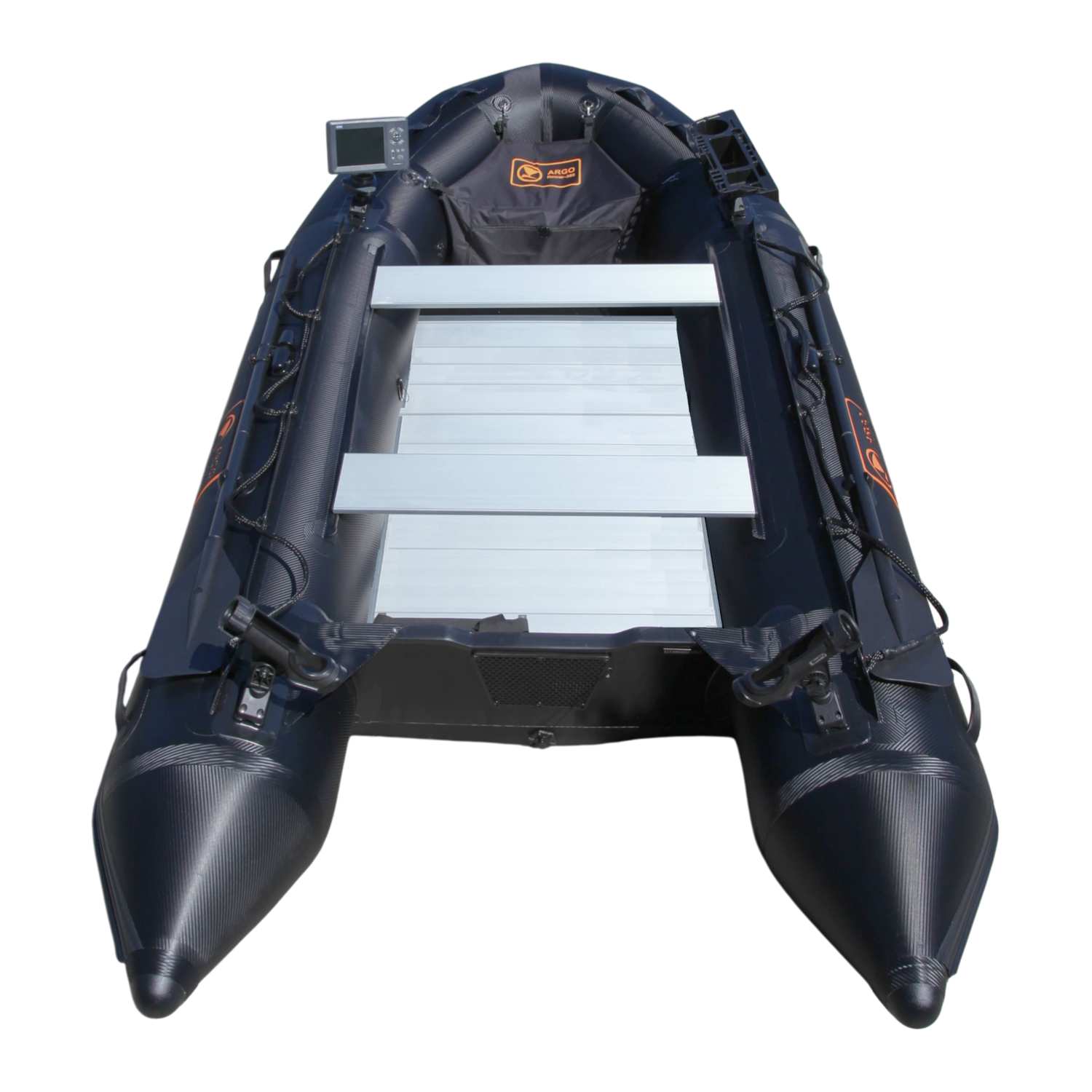How to select the propeller pitch
Share
How propeller pitch affects boat speed and fuel consumption
The propeller is the heart of a boat engine, determining your vessel’s speed, maneuverability, and fuel efficiency. One of the key characteristics of a propeller is its pitch, which directly affects how the boat behaves on the water. Choosing the right pitch allows you to unlock the engine’s potential, reduce fuel consumption, and ensure comfortable handling. In this article, we’ll explain what propeller pitch is, how it impacts speed and fuel use, and give recommendations on selecting the optimal option for different needs.
What is propeller pitch?
Propeller pitch is the theoretical distance a propeller would travel in a solid medium in one complete revolution, without accounting for slippage. It is measured in inches and indicated in the propeller’s marking, for example 13 ¾ x 21, where 21 is the pitch. In practice, because of water resistance and slippage (typically 10–20% for planing boats), the actual distance is smaller, but pitch remains the key specification defining propeller performance.

You can compare pitch to car gearing:
A higher pitch works like a higher gear - better for speed but requires more power.
A lower pitch works like a lower gear - providing thrust and acceleration, but limiting maximum speed.
Understanding this principle helps you choose a propeller suited to your goals, whether it’s high-speed cruising, fishing, or carrying heavy loads.
How does propeller pitch affect boat speed?
Propeller pitch directly determines how fast a boat can go. The larger the pitch, the more water the blades push with each revolution, creating more thrust. This increases top speed - but only if the engine can sustain optimal RPM.
Large pitch propeller (e.g., 21–23 inches):
- Ideal for high-speed boats with powerful engines.
- Enables high cruising speeds, especially on lightweight boats with minimal load.
- Increases engine load and reduces RPM. If the engine cannot handle it, planing becomes difficult, and top speed may actually drop.
Small pitch propeller (e.g., 9–11 inches):
- Provides quick acceleration and easier planing — good for heavy boats or full loads.
- Limits maximum speed, since less water is moved per revolution.
- Allows the engine to reach higher RPM, sometimes excessively, which can shorten engine life.
Example: A 15 HP engine with an operating range of 4500–5500 RPM:
- A 10-inch pitch propeller gives ~35 km/h at 5300 RPM.
- A 10-inch pitch propeller gives ~35 km/h at 5300 RPM.
- An 11-inch pitch raises speed to ~38 km/h but lowers RPM to 5100.
- A 9-inch pitch increases thrust but lowers speed to ~32 km/h, with RPM rising to 5500.
So, pitch choice is always a balance between speed and engine load.
How propeller pitch affects fuel consumption?
Fuel efficiency depends on how well the engine operates within its recommended RPM range. Pitch plays a crucial role here, as it influences engine load and running mode.
Optimal pitch:
- Keeps the engine within the recommended RPM (given in the engine manual).
- Ensures efficient fuel burn, minimal consumption, and fast planing.
- Example: A 20–25 HP engine with 11–13 inch pitch can reduce fuel use at cruising speed by 15–20% compared to an unsuitable propeller.
Too much pitch:
- Overloads the engine, lowering RPM.
- Increases fuel consumption, as the engine works harder to turn the propeller.
- Slower planing also burns more fuel.
- Can lead to overheating and wear.
Too little pitch:
- Lets the engine rev too high, increasing fuel use.
- The boat may not reach optimal speed.
- Inefficient operation leads to higher fuel burn per kilometer.
Example:
A boat with a 300 mm pitch propeller and 400 kg load uses ~400 g/km of fuel. Switching to a 240 mm pitch reduces use to ~237 g/km, since the boat planes faster and the engine runs optimally. Four-blade low-pitch propellers can also save fuel at cruising speeds due to increased blade surface area.
How to choose the optimal propeller pitch?
The right pitch depends on boat type, engine power, load, and intended use. Key tips:
1. Define your purpose:
- High-speed cruising → higher pitch.
- Fishing, trolling, or heavy loads → lower pitch for thrust and efficiency.
- Mixed use → choose a compromise.
2. Check engine specifications:
- Follow the manufacturer’s recommended RPM (e.g., 4500–5500).
- Pitch should keep the engine within this range at full throttle under normal load.
3. Use a tachometer:
- Measure RPM at top speed with typical load.
- Below spec range → propeller too “heavy”, reduce pitch by 1–2 inches.
- Above spec range → propeller too “light”, increase pitch by 1–2 inches.
- 1 inch of pitch changes RPM by ~150–200.
4. Consider boat type and load:
- Light planing boats (slip ~10%) → higher pitch.
- Heavy displacement boats (slip up to 25%) → lower pitch.
- Full load → lower pitch; light load → higher pitch.
6. Number of blades:
- 3-blade props: versatile, balanced speed and thrust.
- 4-blade props (with lower pitch): more thrust, faster planing, better fuel efficiency, but 5–10% lower top speed.
6. Experiment:
- Often, the best pitch is found through testing.
- For mixed uses (e.g., fishing + cruising), keep several props with different pitches, or consider a variable pitch propeller, which lets you adjust blade angle — though these are more expensive.

